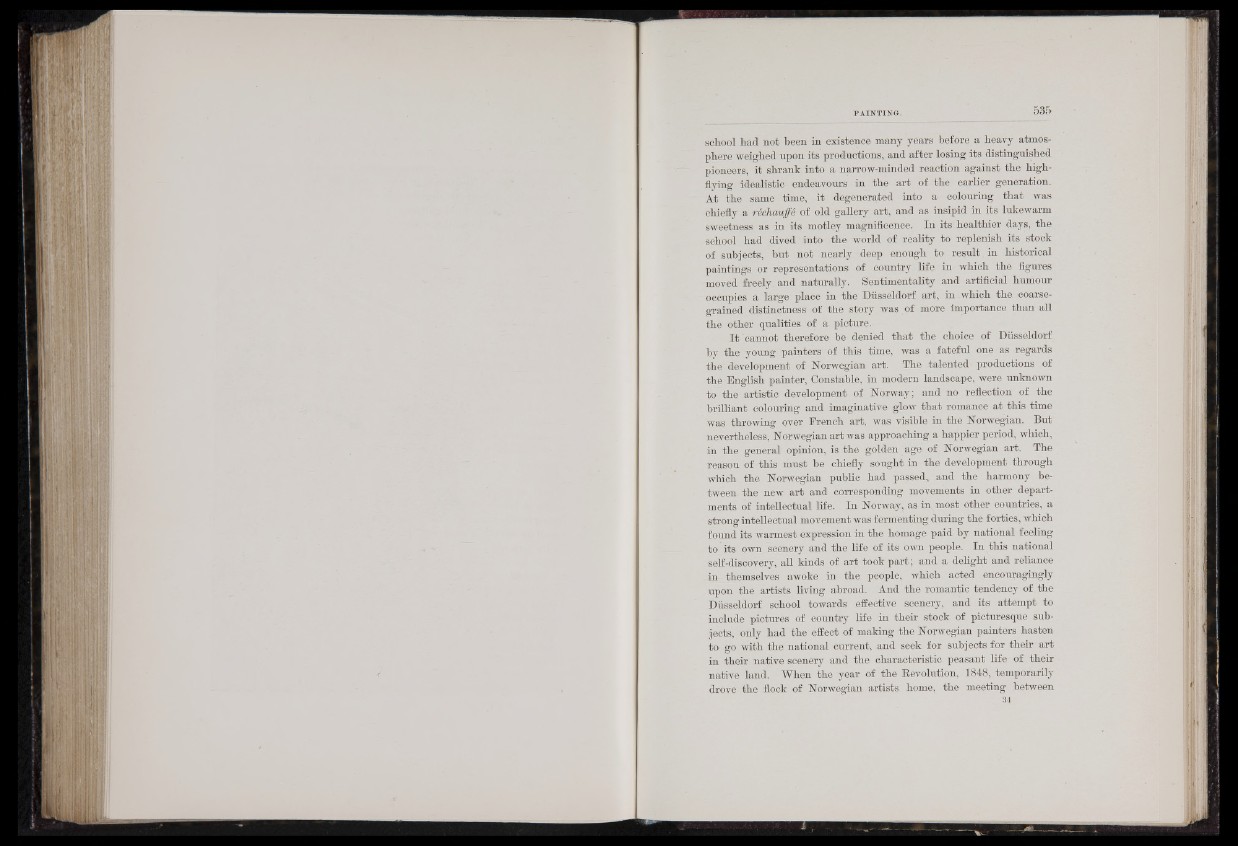
school had not been in existence many years before a heavy atmosphere
weighed npon its productions, and after losing its distinguished
pioneers, it shrank into a narrow-minded reaction against the highflying
idealistic endeavours in the art of the earlier generation.
At the same time, it degenerated into a colouring that was
chiefly a réchauffé of old gallery art, and as insipid in its lukewarm
sweetness as in its motley magnificence. In its healthier days, the
school had dived into the world of reality to replenish its stock
of subjects, but not nearly deep enough to result, in historical
paintings or representations of country life in which the figures
moved freely and naturally. Sentimentality and artificial humour
occupies a large place in the Düsseldorf art, in which the. coarsegrained
distinctness of the story was of more importance than all
the other qualities of a picture.
I t cannot therefore be denied that the choice of Düsseldorf
by the young painters- of this time, was a fateful one as regards
the development of Norwegian art. The talented productions of
the English painter, Constable, in modern landscape, were unknown
to the artistic development of Norway; and no reflection of the
brilliant colouring and imaginative glow that romance at this time
was throwing qver French art, was visible in the Norwegian. But
nevertheless, Norwegian art was approaching a happier period, which,
in the general opinion, is the golden age. of Norwegian art. The
reason of this must be chiefly sought in the development through
which the Norwegian public had passed* and the harmony between.
the new art and corresponding movements in other departments
of intellectual life. In Norway, as in most other countries, a
strong intellectual movement was fermenting during the forties, which
found its warmest expression in the homage paid by national feeling
to its own scenery and the life of its own people. In this national
self-discovery, all kinds of art took part ; and a delight and reliance
in themselves awoke in the people, which acted encouragingly
upon the artists living abroad. And the romantic tendency of the
Düsseldorf school towards effective scenery, and its attempt to
include pictures of country life in their stock of picturesque subjects,
only had the effect of making the Norwegian painters hasten
to go with the national current, and seek for subjects for their art
in their native scenery and the characteristic peasant life of. their
native land. When the year of the Revolution, 1848, temporarily
drove the flock of Norwegian artists home, the meeting between